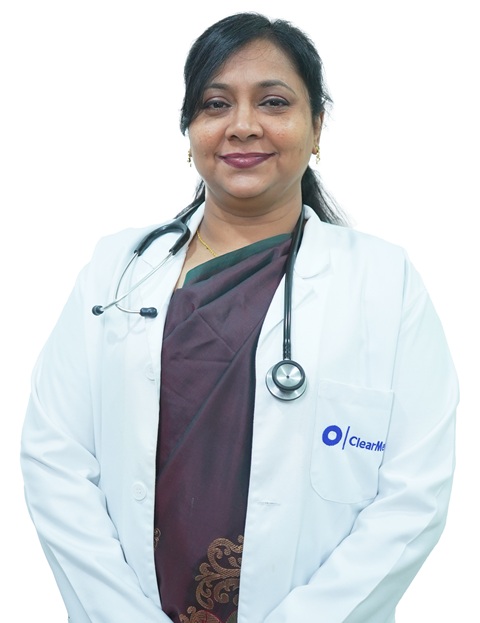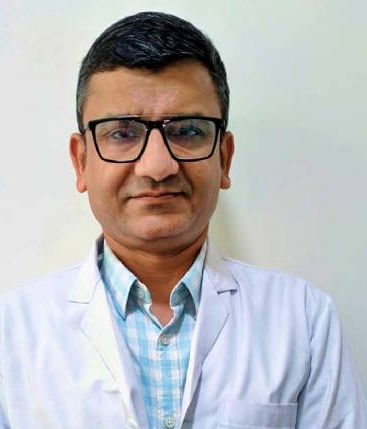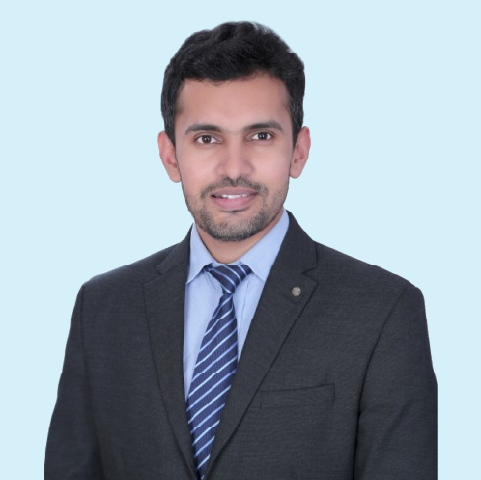Tummy Tuck (Abdominoplasty) Procedure - Surgery, Side Effects
Dr. Priyanka Sharma

Treatment Duration
90 Minutes
------ To ------120 Minutes
Treatment Cost
₹ 1,00,000
------ To ------₹ 2,50,000

Abdominoplasty, a procedure developed and improved since the 1960s, has witnessed various technical advancements. Today, it stands out as one of the most regularly performed and widespread procedures in aesthetic plastic surgery.
Its primary objective is removing excess tissue in the abdominal region and attaining an aesthetically pleasing body profile. If you are considering this procedure, read below to know more.
Procedure Name | Abdominoplasty |
Alternative Name | Tummy Tuck |
Condition Treated | Excess fat |
Benefits of Surgery | Aesthetic benefits |
Treated by | Plastic and Cosmetic Surgeon |
You can check Tummy Tuck Surgery Cost here.
What is Abdominoplasty?
As we age, our skin changes, such as a decrease in collagen and elasticity, resulting in loose skin. This phenomenon occurs even in individuals at certain stages of maturity, irrespective of their weight.
Abdominoplasty, popularly known as "tummy tuck," reduces excess skin and fat around the abdomen while enhancing the strength of the abdominal muscles. Weight loss often results in extra skin, making abdominal surgery a viable option for improvement.
This surgery has gained popularity not only for those seeking to address post-weight loss concerns but also as a key element in the Mommy Makeover procedure.
In a standard abdominoplasty, excess skin in the lower abdomen is removed, and the remaining upper abdominal skin is stretched to cover the removed area. Additionally, the procedure involves tightening the six-pack muscles (rectus muscles), resulting in a more defined waist.
The increasing prevalence of bariatric surgery has made abdominoplasty a valuable solution for individuals dealing with excess abdominal tissue following significant weight loss. This surgical intervention helps these patients achieve a more desirable abdominal appearance.
Expert Doctors (10)
NABH Accredited Hospitals (10)


Need for Abdominoplasty
Patients with excessive skin laxity, fat deposits, and abdominal wall weakness are ideal candidates for full abdominoplasties. This comprehensive procedure addresses multiple concerns, providing a more dramatic transformation.
Those with minimal to moderate subcutaneous fat and abdominal wall laxity, primarily in the infra-umbilical region (below the navel), may opt for a "mini-abdominoplasty" to address specific concerns without needing a full procedure.
Not everyone is an ideal candidate for a tummy tuck. An individuals with little to no fat and no abdominal wall laxity are suitable candidates for liposuction alone. It is a less invasive option for improving abdominal contours.
Following are the individuals who need abdominoplasty:
Post-Pregnancy Concerns: Women who have undergone multiple pregnancies often experience significant skin and abdominal wall laxity. Abdominoplasty helps address these issues, restoring firmness and contour to the abdominal region.
Bariatric Surgery Aftermath: Patients who have undergone bariatric surgery for substantial weight loss may be left with excess skin and a pannus (excessive fat hanging below the stomach area).
Abdominoplasty is a solution to remove this excess skin and achieve a more proportionate body shape post-weight loss.Aesthetic Improvement: Individuals, both men and women, seek tummy tucks to enhance the appearance of their abdomen, achieving a more toned and aesthetically pleasing look.
Benefits of Abdominoplasty
Abdominoplasty provides significant cosmetic benefits by flattening the stomach and improving overall abdominal appearance. It also provides medical benefits for patients like:
Correcting Ventral Hernia: A tummy tuck can address ventral hernia, where abdominal tissue protrudes through the abdominal wall. By strengthening weakened abdominal muscles, the procedure reduces pressure on the skin and corrects the hernia.
Managing Stress Urinary Incontinence (SUI): For individuals with SUI, a condition causing uncontrollable bladder leakage during activities like sneezing or exercising, studies suggest that a tummy tuck may be beneficial.
This is notable for women, especially after childbirth, and can improve bladder control.Alleviating Back Pain: Abdominoplasty relieves back pain, a common issue post-pregnancy or significant weight loss. By surgically tightening weakened stomach muscles and removing excess fat, a tummy tuck provides abdominal support, reducing back pain.
Improving Posture: Stronger abdominal muscles resulting from a tummy tuck not only alleviate back pain but also contribute to improved posture. The tightened muscles provide increased support to the spine, leading to a positive impact on overall posture.
Protocol Before and On the Day of Abdominoplasty
Before undergoing surgery, it is crucial to assess a patient's medical history thoroughly. Those with good nutritional status and overall health are better candidates. Considering the challenges associated with significant weight loss, special attention is required for bariatric patients.
These patients pose unique challenges due to skin laxity. Additional procedures may be necessary to address thigh, back, arm, and flank areas, ensuring overall body symmetry.
Individuals with diabetes mellitus are at a higher risk of facing complications during abdominoplasty. Therefore, it is crucial to thoroughly assess and manage their condition before considering the procedure.
Therefore, abdominoplasty should be postponed until patients reach their optimal medical condition.
Before Abdominoplasty
A collaborative team approach is recommended for a smoother surgical experience and to reduce the chances of complications. Before undergoing the procedure, the following aspects are a part of the pre-op assessment for every patient:
Pulmonary and Cardiology Assessment: A thorough lung and heart function evaluation is conducted to optimise respiratory and cardiovascular health.
Educational Support for Breathing Exercises: Patients are instructed on using an incentive spirometer, often facilitated by a nurse educator. This helps in promoting proper breathing techniques essential for recovery.
Psychological Evaluation: Before the procedure, a psychological evaluation is carried out to ascertain that the patient holds realistic expectations regarding the surgical process and the anticipated aesthetic outcomes. This is especially pertinent for individuals who have undergone significant weight loss.
Nutritional Guidance: A consultation with a nutritionist is arranged to establish and maintain healthy eating habits postoperatively, supporting overall well-being during recovery.
Anaesthesia Evaluation: An anaesthesiologist assesses the patient's suitability for general anaesthesia, ensuring they are physically prepared for the surgery.
After the assessment, the following requisites are a mandate:
Parameters | Prerequisites |
Risk Evaluation |
|
Anaesthesia Selection | General anaesthesia |
Mandatory Precautions |
|
On the Day of Abdominoplasty
Individuals undergoing tummy tuck must take their prescribed antibiotic before heading to the hospital. They can expect the following on the day of the procedure:
Parameter | Prerequisites |
Consent | Mandatory |
Surgical Preparation |
|
Physical Evaluation | Vitals check-up (Blood pressure, heart rate, oxygen saturation, etc.) |
IV Line | Yes, for administering medications |
Anaesthesia Administration | General anaesthesia |
Abdominoplasty Procedure
The procedure takes 90-120 minutes. It is done under general anaesthesia. The incisions are made according to the type of the procedure, which are as below:
Full Abdominoplasty
Recommended when there's significant excess skin or fat in the lower abdomen.
Targets excess fat removal, trimming loose skin, and tightening of underlying muscles throughout the entire abdominal region, including around the navel.
It involves two incisions. One long incision (about 25-30 cm) along the bikini line above the groin area and a second incision to separate the navel from surrounding tissue.
The navel is then relocated, leaving a scar.
Mini Abdominoplasty
Suitable for individuals with less excess skin, utilising shorter incisions.
Typically completed within 2 hours.
The belly button remains in its original position during this procedure.
It focuses on tightening muscles in the lower abdomen by excising a section of skin and fat.
It results in a minimal, hidden scar.
Fleur de Lis Abdominoplasty
It is aimed at reducing excess skin across the entire midsection.
Both horizontal and vertical incisions are made. One parallel to the typical tummy tuck incision and another running vertically across the middle of the stomach.
Expectation After Abdominoplasty
Recovering from abdominoplasty spans 6 to 8 weeks. Specific postures and precautions are essential for optimal healing during the initial phase.
Recovery in Hospital
Following a tummy tuck procedure, patients are advised to wear an abdominal garment or belly binder for several weeks. The hospital recovery expectations are:
Monitoring Vital Signs: Upon completion of the surgery, the patient will be moved to a recovery room, where medical staff will closely monitor vital signs until they stabilise. Once the vital signs stabilise, they will be moved to a hospital ward or room to continue receiving care and monitoring.
Medication Prescription: The doctor will prescribe pain medications and antibiotics to manage discomfort and reduce the risk of infections during recovery.
Catheter Removal: If placed during surgery, the urinary catheter will typically be removed within the first 24 hours to promote comfort and mobility.
Light Mobility: Within the first-day post-surgery, medical team members will assist the patient in walking to reduce the risk of blood clot formation.
Drain Care Instructions: Patients will be educated on managing and caring for drains placed to remove excess fluid. These drains are removed within 3-5 days post-surgery.
At-home Recovery
After discharge, imdividuals receive instructions for home care and follow-up. These include:
Jackknife Position: For the first week after surgery, maintain a slightly bent posture at the waist, akin to a jackknife position, when standing and walking to alleviate strain on the abdominal area.
Inclined Sleeping: Sleep on an inclined surface for at least the first-week post-surgery, with the body elevated and knees bent, to minimise discomfort and promote proper drainage.
Abdominal Garment: Wear the prescribed abdominal garment or belly binder consistently throughout the recommended duration to support the surgical site, reduce swelling, and aid in contouring.
Ice Compress: Use ice packs or compresses to reduce pain and swelling in the treated area, particularly during the initial stages of recovery.
Avoiding Physical Strain: Refrain from strenuous physical activities or exercises for 6 to 8 weeks following the procedure, or as advised by the doctor, to prevent complications and support the healing process.
Bathing: Patients can resume normal bathing routines one week post-surgery, following any specific instructions provided by their medical team to ensure proper care of the incision sites.
First Follow-up
The initial follow-up appointment following your tummy tuck surgery is scheduled for the 10th day afterwards. During this visit, the surgeon will remove the mesh strip bandage, which consists of non-absorbable sutures.
The second follow-up appointment is then set for two weeks after the surgery.
Risks and Complications of Abdominoplasty
Identifying risk factors and conducting a comprehensive patient evaluation before surgery is paramount. Abdominoplasty is a complex surgery that comes with potential complications. The complications are:
Post-Surgery Discomfort: Expect pain and swelling in the days following the tummy tuck surgery. The surgeon will prescribe pain medication and guide in managing discomfort.
Numbness, Bruising, and Fatigue: During recovery, one might experience numbness, bruising, and fatigue. These are common and should improve over time.
Infection Risks: Like any surgery, there is a rare risk of infection. Vigilance is needed. The surgeon will monitor for signs of infection, providing appropriate treatment if necessary.
Bleeding Under the Skin Flap: Although uncommon, there is a risk of bleeding under the skin flap. Timely medical attention is required for any unusual bleeding or haematoma development.
Blood Clot: Complications may include the formation of blood clots. Individuals with poor circulation, diabetes, or underlying heart, lung, or liver conditions may have an increased risk. Careful monitoring and preventive measures are undertaken to minimise this risk.
Insufficient Healing: In some cases, inadequate healing may occur, leading to more pronounced scarring or skin loss. If healing is unsatisfactory, a second surgery may be necessary for correction.
When to See a Doctor?
Though tummy tuck surgery is successful, one must be aware of any unusual symptoms. Contact your surgeon if you experience any of the following:
Fever or Infection Signs: If you develop a fever or notice any signs of infection, such as redness, warmth, or discharge from the incision site, seek medical attention.
Breathing or Chest Pain: Report any difficulty breathing or chest pain, as these could indicate serious complications that require immediate medical assessment.
Abnormal Bruising or Discoloration: If you observe unexpected bruising, discolouration, or changes in skin appearance, inform your doctor.
Persistent Nausea or Vomiting: Contact your doctor if you experience persistent nausea or vomiting, as it could be a sign of complications.
Unusual Fatigue or Weakness: If you feel exceptionally tired or weak, reach out to your doctor to rule out any underlying concerns.
Changes in Sensation: Report any unusual changes in sensation, such as numbness or tingling in the abdominal area, to your doctor.
Cost of Abdominoplasty
The cost of a tummy tuck procedure can vary depending on several factors. The cost ranges from₹1,00,000 to ₹ 2,50,000. Factors influencing the cost include:
The type of hospital chosen for the procedure
The technique varies based on the amount of fat to remove from the abdomen
Admission fees
Doctor fees
The type of room selected for admission
The patient's age and overall medical condition
Any postsurgical complications that may arise
Additional laboratory or examination tests such as X-rays or ECG
The potential requirement for intensive care unit (ICU) facilities
Procedure Name | Cost |
Abdominoplasty | ₹1,00,000 to ₹ 2,50,000 |
Takeaway
Opting for a tummy tuck is a personal choice to enhance the appearance of the abdomen, particularly after pregnancy or significant weight loss.While the primary aim of this procedure is cosmetic improvement, there are medical benefits, too. The positive outcomes also extend to increased self-esteem and confidence.
It's important to note that a tummy tuck is not a weight loss surgery but rather a body-contouring procedure. Physicians advise individuals to achieve and maintain their desired weight before considering this surgery.
Curious about tummy tuck surgery? Reach out to the specialists at HexaHealth for clear insights into the procedures, benefits and expenses, allowing you to plan your budget effectively.
Frequently Asked Questions (FAQ)
What is a tummy tuck?
A tummy tuck, or abdominoplasty, is a surgical procedure. It removes excess skin and fat from the abdomen and tightens the abdominal muscles for a firmer, smoother profile.
How much does a tummy tuck cost?
The cost of a tummy tuck can range from ₹1,00,000 to ₹ 2,50,000. It depends on several factors, which include the type of abdominoplasty.
Who needs tummy tuck surgery?
Individuals with excess skin and fat in the abdominal area, often due to weight loss, pregnancy, or ageing, may consider tummy tuck surgery to achieve a flatter and more toned stomach. It's typically for those who have tried diet and exercise but didn't achieve the results.
What are the risks of getting a tummy tuck?
Risks associated with tummy tuck surgery include:
- Infection
- Bleeding
- Scarring
How long is the recovery time for a tummy tuck?
Recovery time for a tummy tuck varies. Patients typically need around two to four weeks to return to light activities and 6-8 weeks to fully heal and see final results.
What are the different types of tummy tuck procedures?
The procedures include full, partial, and Fleur de Lis abdominoplasty. Each addresses varying degrees of excess skin and fat in the abdominal area.
Can I get a tummy tuck after pregnancy?
Yes, you can typically get a tummy tuck after pregnancy. It's often recommended to wait until delivery to ensure longer-lasting results.
Will insurance cover a tummy tuck surgery?
Insurance usually doesn't cover tummy tuck surgery unless it's deemed medically necessary. These conditions include correcting a hernia or repairing abdominal muscles weakened by pregnancy.
Are there non-surgical alternatives to abdominoplasty?
Yes, there are non-surgical alternatives to abdominoplasty. CoolSculpting can help reduce fat and tighten the skin to improve the appearance of the abdomen.
What is the difference between a tummy tuck and liposuction?
A tummy tuck removes excess skin and tightens abdominal muscles for a flatter appearance. While liposuction targets and removes fat deposits from specific areas to contour the body.
Can I get a tummy tuck if I'm overweight?
You may still be eligible for a tummy tuck if you're overweight. However, achieving a stable weight beforehand can optimise results and reduce potential risks.
How long do tummy tuck results last?
Tummy tuck results can last for many years. However, maintaining a healthy lifestyle with proper diet and exercise can help prolong the outcome.
References
All the articles on HexaHealth are supported by verified medically-recognized sources such as; peer-reviewed academic research papers, research institutions, and medical journals. Our medical reviewers also check references of the articles to prioritize accuracy and relevance. Refer to our detailed editorial policy for more information.
- Regan JP, Casaubon JT. Abdominoplasty. [Updated 2023 Jul 24]. In: StatPearls [Internet]. Treasure Island (FL): StatPearls Publishing; 2023 Jan-.

- Hafezi F, Nouhi A. Safe abdominoplasty with extensive liposuctioning. Ann Plast Surg. 2006 Aug;57(2):149-53. doi: 10.1097/01.sap.0000215246.49308.17. PMID: 16861993.

- Frank K, Hamade H, Casabona G, Gotkin RH, Kaye KO, Tiryaki T, Freytag DL, Bialowas C, Koban KC, Cotofana S. Influences of Age, Gender, and Body Mass Index on the Thickness of the Abdominal Fatty Layers and its Relevance for Abdominal Liposuction and Abdominoplasty. Aesthet Surg J. 2019 Sep 13;39(10)

- Ramirez AE, Hsieh TY, Cardenas JP, Lao WW. Abdominoplasty: My Preferred Techniques. Ann Plast Surg. 2021 Mar 1;86(3S Suppl 2):S229-S234. doi: 10.1097/SAP.0000000000002639. PMID: 33278073; PMCID: PMC7969168.

- Regan JP, Casaubon JT. Abdominoplasty. 2023 Jul 24. In: StatPearls [Internet]. Treasure Island (FL): StatPearls Publishing; 2023 Jan–. PMID: 28613712.

- Bhargava D. Abdominoplasty today. Indian J Plast Surg. 2008 Oct;41(Suppl):S20-6. PMID: 20174539; PMCID: PMC2825125.

- Klinger M, Klinger F, Giannasi S, Bandi V, Vinci V, Catania B, Lisa A, Veronesi A, Battistini A, Giaccone M, Caviggioli F, Maione L. Aesthetic and Functional Abdominoplasty: Anatomical and Clinical Classification based on a 12-year Retrospective Study. Plast Reconstr Surg Glob Open. 2021 Dec 20;9(12

- Vidal P, Berner JE, Will PA. Managing Complications in Abdominoplasty: A Literature Review. Arch Plast Surg. 2017 Sep;44(5):457-468. doi: 10.5999/aps.2017.44.5.457. Epub 2017 Sep 15. PMID: 28946731; PMCID: PMC5621815.

- Flores González EA, Pérez Chávez F, Ramírez Guerrero OR, Gracida Mancilla NI, Vázquez Apodaca RA. A New Surgical Approach to Body Contouring. Plast Reconstr Surg Glob Open. 2021 May 24;9(5):e3540. doi: 10.1097/GOX.0000000000003540. PMID: 34046290; PMCID: PMC8143746.

- Louri NA, Ammar HM, Abdulkariml FA, Alkhaldi TASAE, AlHasan RN. Abdominoplasty: Pitfalls and Prospects. Obes Surg. 2020 Mar;30(3):1112-1117. doi: 10.1007/s11695-019-04367-5. PMID: 31898048.

- Elbaz JS, Flageul G, Olivier-Masveyraud F. Les plasties abdominales dites "classiques" ["Classical" abdominoplasty]. Ann Chir Plast Esthet. 1999 Aug;44(4):443-61. French. PMID: 10550922.

Last Updated on: 2 July 2024
Reviewer

Dr. Priyanka Sharma
MBBS, DNB Plastic Surgery, Training in Hand and Microvascular Surgery, Training in Hair Transplant
15 Years Experience
Dr Priyanka Sharma is a highly regarded Plastic, Reconstructive, and Aesthetic Surgeon with over 15 years of experience.
She is currently associated as a Consultant with:<...View More
Author

She has extensive experience in content and regulatory writing with reputed organisations like Sun Pharmaceuticals and Innodata. Skilled in SEO and passionate about creating informative and engaging medical conten...View More
Tummy Tuck Surgery in Top Cities
Tummy Tuck Surgery Cost in Top Cities
Latest Health Articles
Other Treatments in Your City
























